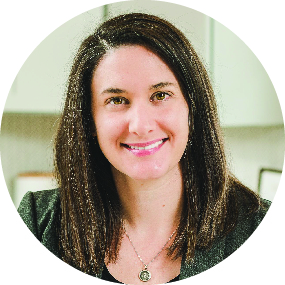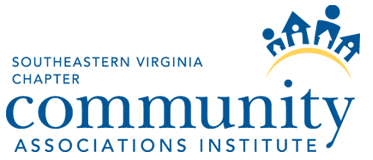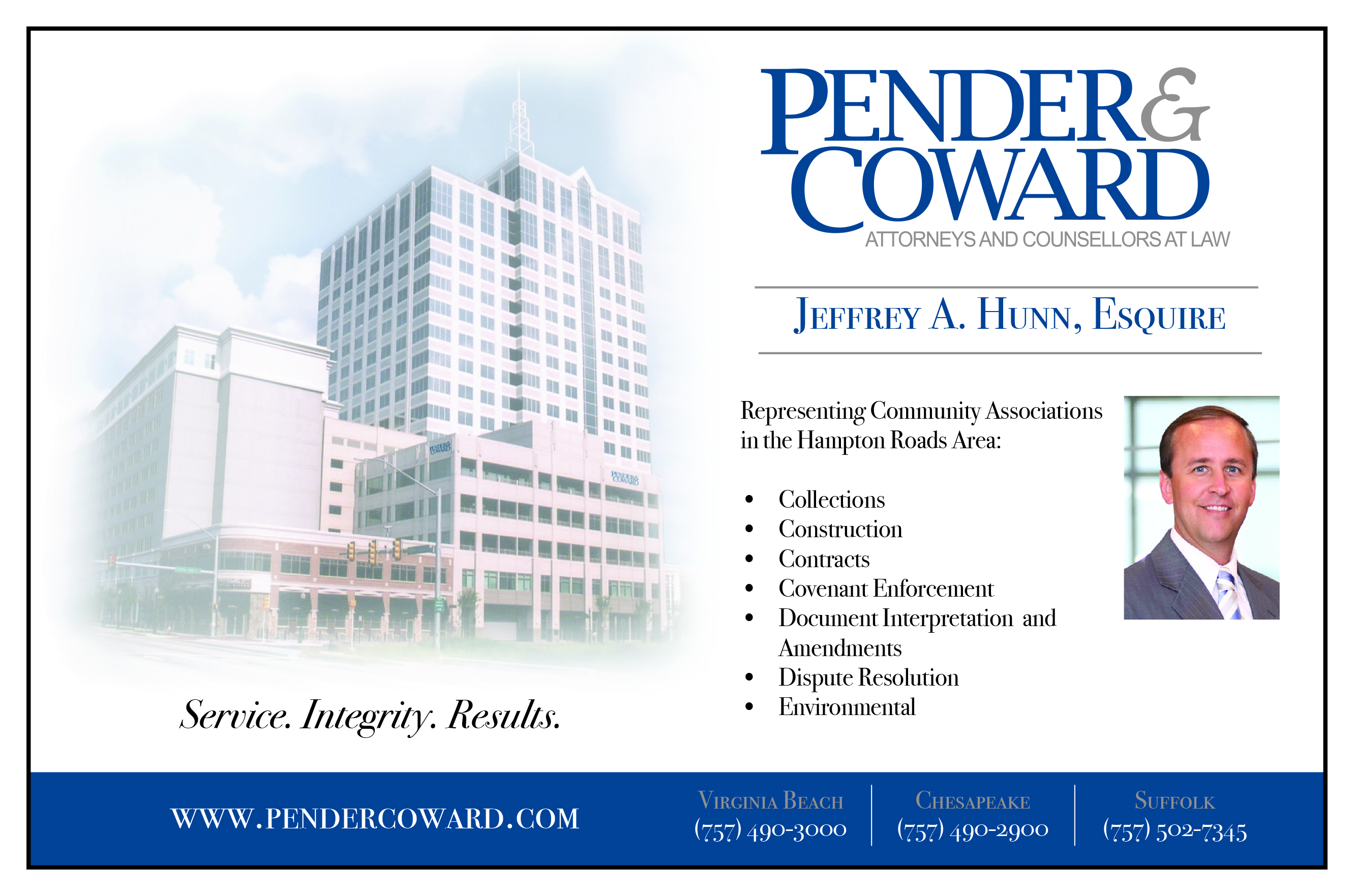
There is a widespread belief among homeowners who live in associations, that if their assessments stay flat and do not increase, their community is in good shape and the Board is doing its job. And while it’s easy to understand the appeal of a historically flat budget, a lack of increases in an association’s assessments could be an indication of rough seas ahead.
While the makeup of every association is unique, whether in the types of amenities offered, the maintenance obligations, or the language in their governing documents, one thing will always be the same, and that is the intent. The intent or purpose of a community association is to preserve the condition of the community. The preservation of the community and owners’ investment is accomplished through the maintenance of the property and landscaping, rule and covenants enforcement, and perhaps most importantly, proper budgeting practices. The association’s annual budget is what drives the assessment amount that each owner is required to pay.
So what is the budget process, and why does it increase my fees?
What is the budget process?
No two associations are alike. Each association will have its unique levels of responsibilities and services as determined by its governing documents. Smaller associations may only have a monument sign at the entrance and a small landscape bed that it is required to maintain, while others may encompass large amenities packages, common area landscaping, exterior maintenance, and more. These are all elements the association has to budget for each year. And if there’s an expense, there needs to be income to cover it.
Each year, the association’s Board of Directors, along with their community manager, will begin what is known in the business as budget season. Budget season involves an evaluation of assessment income as compared to the expenses the association has incurred for the current fiscal year. Did the association spend more money than it collected? Was there an unforeseen expense or project? Was a new service added to the community or a new vendor contract signed unexpectedly at an increased cost? These are all questions Boards and community managers will ask themselves when reviewing the current financial status of their association. The answers to these questions will impact the projections for the coming year’s budget.
After the Board reviews questions like the ones noted above (and others we’ll discuss below), they will have a projection of the association’s expenses for the coming year. The last step is then ensuring that they have the income to support the expenses. For example, if an association anticipates that it will incur $500,000 in expenses, and the current assessment rate only allows for the collection of $450,000, an increase will most likely need to be imposed. It’s just that simple.
Keep in mind, Board Members don’t want to raise assessments. They, as owners, are subject to any increases just like any other owner in the community. However, Board Members have a fiduciary responsibility, or a commitment to act in the association’s best interest, which can sometimes mean imposing an increase in assessments. Board Members would be remiss in their duty in the above scenario if they did not increase assessments to cover the anticipated $500,000 in expenses. By acting and increasing assessments, the Board is acting in the community’s best interest.
But why does my fee have to increase?
Think about something small that you buy regularly. Maybe it’s a cup of coffee from your favorite coffee shop. Let’s say you buy this same cup of coffee a few times a week, week after week. You would expect the price to be the same with every purchase, right? Right. Until one day, you buy your same cup of coffee, and it costs fifty cents more than it did a few days ago. You’re not getting any more coffee than you did yesterday. It doesn’t taste any better. So why should you pay more? One reason is inflation.
The above scenario is a very simple example of how inflation can affect our everyday lives. We as consumers are paying more for the same product or service, whether we want to or not. Inflation affects associations in much the same way, only on a larger scale than a single cup of coffee. But unlike the cup of coffee that can easily be sourced to another shop for a slightly cheaper price, associations don’t always have it so easy, especially when it comes the necessities like power and water. These are not amenities that can be shopped around to the lowest bidder. The prices for these necessities are what they are, and the cost for the same service yesterday can cost more today without warning. Including an inflationary increase between 2-5%, each year can help defray some of the surprise increases that can affect associations.
But inflation isn’t the only factor Boards need to consider when preparing an annual budget. Additional considerations include service contract renewals, the addition of new services, additional amenities, special projects, and long-term goals for the community.
Remember that new playground a member asked about at the last meeting. And that request to increase security services around the community. Someone also requested more meetings throughout the year to help keep the community informed. Many residents think the community needs a new and better landscape vendor. While this wish list of items might not seem significant for a community to offer its membership, all these things cost money, and if they’re not currently in the community’s budget, then the money to cover the additional cost must come from somewhere. And that somewhere is usually an increase in assessments.
When the Board sits down to start the budget process, they should already have a good idea of what service contracts are coming up for renewal, along with thoughts on where the membership might want to see improvements, as well as plans for large, upcoming projects like the complete repaving of the community’s parking lots. All these elements should factor into the expenses for the community in the coming year. And if the expenses exceed the income, the Board has two decisions. They can either find a way to cut costs or they must increase assessments to cover the anticipated expenses.
What does it mean if my fees do not increase?
Sometimes if you do not see an increase in assessments for a year or two, it can mean that your Board had the forethought to plan ahead. Perhaps they increased your fee several years ago at a rate high enough to cover both inflationary costs and the needs of the community for the years you have not seen an increase. But not seeing an increase in a few years can also be an indication of something else.
If the association is not keeping up inflationary costs, at a minimum, they are limited in the available options to make up for what will most likely become an assessment shortfall. The most common, and unfortunately, most harmful option is what is known as deferred maintenance.
Deferred maintenance is a reduction in the level of services covered by the association such as landscaping or exterior building maintenance. Service contracts are negotiated down to the bare minimum or sometimes terminated altogether in an effort to keep costs in line with an income that has fallen behind the times.
Large projects like paving or exterior maintenance that are deferred due to underfunding can end up costing the association more money in the long run with additional maintenance costs, damage costs, and more, which is why it should only be used as a last resort, but preferably not at all.
What happens if my association is underfunded?
If your association is not collecting enough income to cover basic expenses, and they are not properly reserving funds for long-term repairs or projects, when the time comes to make these improvements, likely, funds will not be available. One option for funding could be to apply for a loan, which, depending on the financial stability of the association, can sometimes be an unsuccessful endeavor. The other option is a special assessment.
A special assessment is an additional fee that is imposed on all owners in an association to help fund a repair or project that is needed. This assessment can be a one-time, lump-sum fee, or it can be broken down into smaller payments due perhaps over twelve months. This will all depend on the parameters laid out by the Board.
How do I ensure my community is in good financial standing?
Get involved!
If you’re concerned about your community’s budget, go to a meeting, and ask questions. Request copies of the current and past budgets to determine if incremental increases have been happening. Ask if there is a current reserve study in place. A reserve study is a detailed examination of the association’s documents, maintenance responsibilities, and common elements and calculates how much money is going to be needed to replace common elements in the community. This could the repaving of the streets, new roofs, new siding, and more. Every community’s reserve study will be different.
The study will consider the age of the property and determine the remaining useful elements such as streets, sidewalks, roofs, and pools based on industry standards. If paved streets, for example, typically last twenty-five years, and the streets are ten years old, their remaining useful life is fifteen years. The study then calculates what the cost to replace the streets will be in fifteen years by looking at what the cost is today and adding an inflationary increase over fifteen years. That cost is then divided by the number of years left to save (in this case fifteen years) and that is how much the association should be reserving for that one element. This is repeated for every common element the association is responsible for maintaining and lumped together to illustrate how much the association is recommended to reserve or save each year.
Being involved with your association and community either as a volunteer Board Member or Committee Member is the best way to get in front of any issues that could be lurking behind a stagnant fee structure. Community Associations depend on volunteers to function and are always looking for more involvement from the owners they serve.
 Jessica Simpkiss, CMCA, AMS, PCAM is a portfolio manager with MyStreet Community Management. She is active in multiple chapters of CAI, and serves on the Communication committee at the local SEVA chapter.
Jessica Simpkiss, CMCA, AMS, PCAM is a portfolio manager with MyStreet Community Management. She is active in multiple chapters of CAI, and serves on the Communication committee at the local SEVA chapter.
